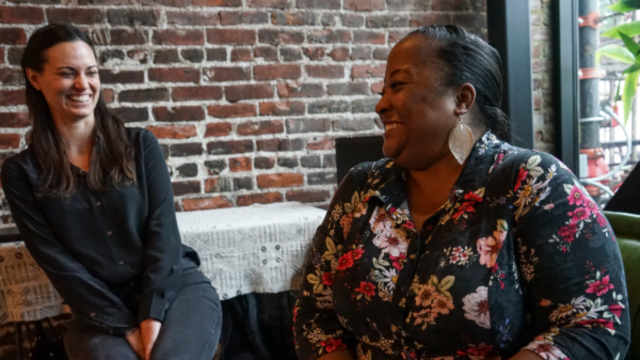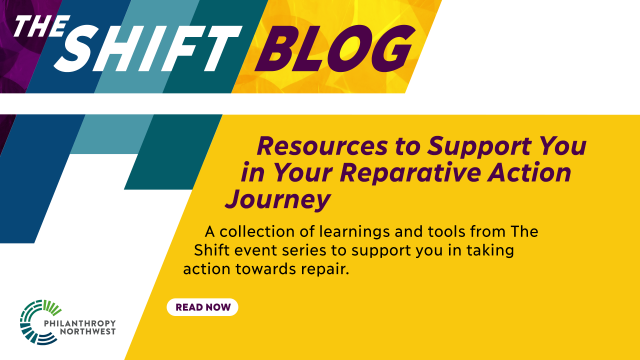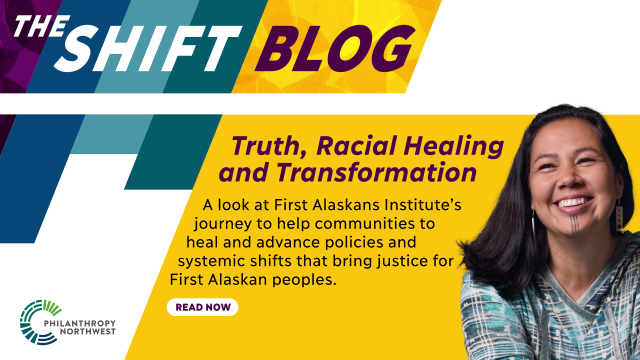Originally published by Philanthropy News Digest.
Over the past decade, philanthropy has become increasingly responsive to the needs of young boys and men of color. The philanthropic community has mobilized to coordinate and partner on efforts like the Obama administration's My Brother's Keeper initiative. More recently, the field has turned its attention to addressing the needs of girls and young women of color. While I applaud these efforts, I'm reminded daily of the pressing and unmet needs of Native communities. And that invariably causes me to think about how much more needs to be done to ensure that all youth — regardless of race, ethnicity, or gender — have equal access to quality education and health care and the opportunity to grow up in safe and thriving communities.
Like other youth of color, Native American and Alaska Natives in cities and communities across the United States face challenges. Natives Americans have endured a history of racism and colonialism that has resulted in multi-generational trauma. Suicide is the second-leading cause of death among Native youth between the ages of 15 and 24 — and that rate is two and a half times the national average. Native youth are five times more likely to end up in the criminal justice system than whites, where they receive disproportionately harsher sentences, and are more likely to be killed by police than any other racial group. Moreover, Native Americans are often categorized in data and reports as "statistically insignificant" or "other," erasing their very existence as a disadvantaged minority. As a result, too many programs, policies, and systems — not to mention philanthropy — ignore or overlook them.
The philanthropic community is well aware of these challenges, and yet foundation funding for Native issues and communities remains disproportionately low, consistently accounting for less than 0.5 percent of annual foundation grant dollars, even though Native Americans are 1.7 percent (5.4 million) of the U.S. population. Institutional philanthropy may blanch at the size of the problem or feel paralyzed by its lack of understanding of Native peoples and cultures, but philanthropy can make a difference. While the challenges are real, the resilience and hope in Native communities has resulted in innovative, high-impact solutions to many of these problems. And the most promising solutions have been driven by and for Native youth.
In 2014, President Obama and the First Lady visited the Standing Rock Sioux Indian Nation in North Dakota, where they met local youth who shared their struggles as well as their inspiring personal stories of hope and determination with the Obamas. Upon his return to the White House, the president told his staff to "find new avenues of opportunity for our Native youth...[because] if we do, there's no question of the great things they can achieve — not just for their own families, but for their nation and for the United States."
In December 2014, the White House launched the Generation Indigenous (Gen-I) initiative, which is focused on improving the lives of Native youth through new investments and increased engagement with Native communities. Emphasizing a comprehensive, culturally appropriate approach, Gen-l works to ensure that all young Native people have the opportunity to reach their full potential by promoting a national dialogue aimed at mobilizing and cultivating the next generation of Native leaders and supporting critical programs in the areas of education, health and nutrition, juvenile justice, housing, and youth engagement.
As vice chair of Native Americans in Philanthropy, I urge philanthropy to see the tremendous potential in our Native communities. And I extend an invitation to all grantmakers to join us at the White House on August 26, 2016, for Generation Indigenous: Raising Impact With Innovation and Proven Strategies, where we will seek to engage the philanthropic community in a dialogue about expanding support for Native youth.
At the meeting, you'll have the opportunity to listen and learn from key philanthropic leaders and organizations, including Casey Family Programs and the W.K. Kellogg Foundation, as they officially launch a philanthropic partnership with Generation Indigenous. It is our deepest hope that the meeting will raise awareness of — and broad-based support for — solutions to the problems facing Native youth today and, in the process, generate new ways to empower Native youth through employment, access to a quality education, and tribal capacity building — all of it centered in Native youth leadership.
We hope you'll join us. Native youth are counting on you.
Note: Attendance is by invitation only. For more information, please contact Native Americans in Philanthropy at GenerationIndigenous@nativephilanthropy.org.
Edgar Villanueva is vice president of programs and advocacy at the Schott Foundation for Public Education and a member of the Lumbee Tribe of North Carolina. Follow him on Twitter @VillanuevaEdgar.


